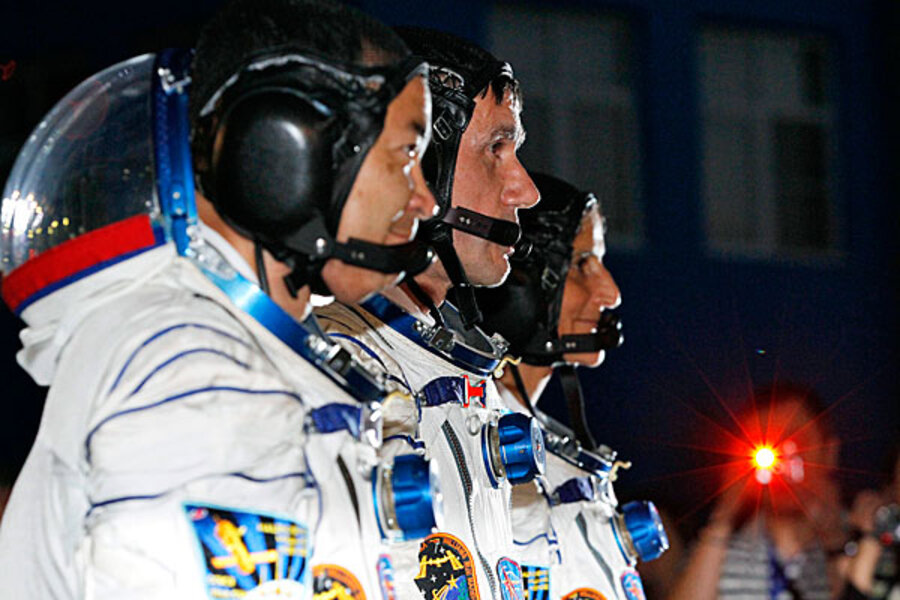Trio of astronauts help restore faith in Russian space program
Loading...
| Almaty, Russia
A trio of Russian, Japanese and U.S. astronauts arrived safely at the International Space Station (ISS) early Tuesday (EDT), to begin a four-month mission.
For Moscow, its a mission that it hopes will help restore confidence in its space program.
Veteran Russian cosmonaut Yuri Malenchenko, NASA astronaut Sunita Williams and Japanese astronaut Akihiko Hoshide rode aboard the Soyuz TMA-05M rocket which lifted off from the Baikonur cosmodrome in Kazakhstan two days ago.
RECOMMENDED: Are you scientifically literate? Take the quiz
The were greeted by NASA Flight Engineer Joseph Acaba and Russian cosmonauts Gennady Padalka and Sergei Revin aboard the ISS, a $100 billion research complex orbiting 240 miles (385 km) above Earth.
"So, a smooth and uneventful docking, by the book," NASA flight commentator Rob Navias said.
The space station will be a busy port orbiting Earth in the coming weeks. Japan's HTV3 cargo ship arrives next week, the first of several spacecraft scheduled to contact the ISS over the next 17 days.
Since the retirement of the space shuttles last year, the United States is dependent on Russia to fly astronauts to the ISS, which costs the nation $60 million per person.
Moscow hopes this mission will help to restore confidence in its once-pioneering space program after a string of launch mishaps last year, including the failure of a mission to return samples from the Martian moon Phobos.
The previous Soyuz launch on May 15 was delayed by more than one month to allow Russia's partly state-owned space contractor, RKK Energia, to prepare a new capsule for launch after an accident during pressure tests damaged the Soyuz crew capsule.
There were no such delays with Sunday's launch.
Williams and Hoshide are both on their second space flight and their first aboard a Soyuz spacecraft. They, along with Malenchenko, are scheduled to return to Earth in mid-November.
The previous crew of three at the ISS returned on July 1. Cosmonaut Oleg Kononenko, NASA astronaut Don Pettit and European Space Agency astronaut Andre Kuipers helped to dock the first privately owned spacecraft during a six-month stint in orbit.
At the end of May, this crew released Space Exploration Technologies' unmanned Dragon cargo, which arrived as part of a test flight and was the first privately owned spaceship to reach the 15-nation ISS project.
Sunday's launch took place less than three weeks after China's Shenzhou 9 spacecraft returned to Earth, ending a mission that put the country's first woman in space .
Although China is far from catching up with the United States and Russia, the Shenzhou 9 marked China's fourth manned space mission since 2003 and comes as budget restraints and shifting priorities have held back U.S. manned space launches. (Editing by Eric Walsh)





